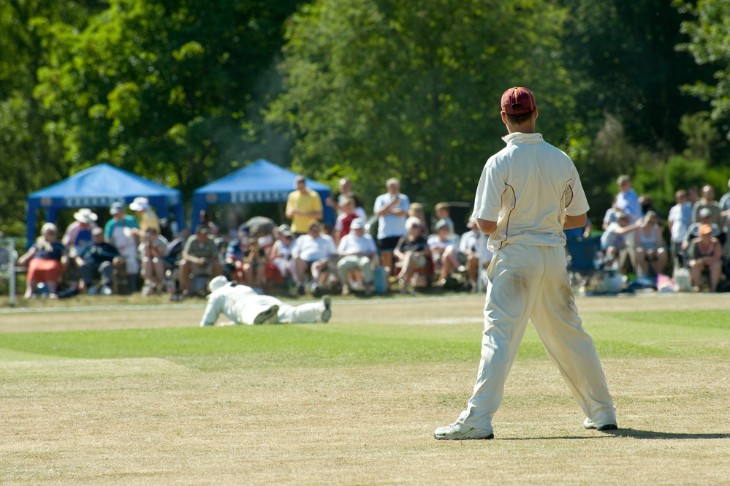- Evolution of Cricket Fan Communities
- Iconic Cricket Venues in England
- The Role of Cricket Clubs in Fandom
- Significance of National Teams in Cricket Fan Culture
- The Impact of Ashes Series on English Cricket Fandom
- Traditions and Rituals of Cricket Spectators
- Cricket Memorabilia and Collectibles
- The Influence of Social Media on Cricket Fandom
- Conclusion
Evolution of Cricket Fan Communities
The first documented cricket match took place in the 18th century, and it was here that we can begin to see the seeds of cricket fandom being sown. Spectators started attending matches, and this marked the beginning of cricket as a spectator sport
Over the centuries, cricket evolved from a leisurely rural pastime into a nationwide sporting phenomenon. With this evolution came the growth of cricket fan communities. These communities played a pivotal role in shaping the unique culture and traditions associated with English cricket.
Cricket clubs and societies began to emerge in the 18th and 19th centuries. These organizations provided a platform for fans to come together, share their passion for the sport, and develop a sense of camaraderie. It was during this time that cricket fan communities started to develop their own rituals and customs, which would become an integral part of English cricket fandom.
One of the notable aspects of these early fan communities was their dedication to supporting their local teams. Rivalries between counties and clubs began to intensify, giving birth to the friendly yet spirited competition that characterizes English cricket to this day. Fans from different regions would gather to support their teams, often traveling long distances to be part of the action.
Iconic Cricket Venues in England
English cricket boasts a collection of iconic venues that hold a special place in the hearts of fans. These venues have witnessed historic matches, legendary performances, and the fervor of cricket enthusiasts over the years. Understanding the significance of these cricket grounds is vital in comprehending the depth of fan cultures and traditions in English cricket.
Among these revered venues is Lord's Cricket Ground, often referred to as the "Home of Cricket." Located in St. John's Wood, London, Lord's is not just a cricket stadium; it's a hallowed institution. The ground has been hosting cricket matches since 1814 and is known for its distinctive Victorian architecture, including the iconic Pavilion. Lord's has been the stage for countless historic moments, from the first-ever Test match in 1884 to modern-day international fixtures.
Another celebrated venue is The Oval, officially known as the Kia Oval due to sponsorship. Situated in Kennington, London, The Oval is one of the oldest cricket grounds in England, dating back to 1845. It witnessed the inaugural Test match on English soil in 1880 and has since been a cherished site for cricket fans. The venue's unique gasometer, known as the "Gasometer End," adds character to the ground.
These are just two examples of the many historic cricket venues scattered across England. Each of these grounds has its own traditions and rituals that fans eagerly partake in. Whether it's the raucous Barmy Army at Edgbaston or the captivating atmosphere at Headingley, these venues are not just places to watch cricket; they are arenas where fans come together to celebrate their love for the sport.
The Role of Cricket Clubs in Fandom
Cricket clubs have played a pivotal role in nurturing fan cultures and traditions in English cricket. These clubs are more than just places to play the sport; they serve as hubs for enthusiasts to connect, bond, and engage in cricket-related activities.
At the grassroots level, local cricket clubs provide opportunities for aspiring players to hone their skills. However, they also serve as social centers where fans gather to discuss matches, share anecdotes, and, of course, support their teams. The sense of community fostered by these clubs is a cornerstone of English cricket fandom.
County cricket clubs, too, have a significant impact on the cricketing landscape. They represent the different regions of England and often have passionate fan bases. The camaraderie among fans of the same county is palpable, and they take immense pride in their team's performance.
Moreover, county clubs organize events, charity matches, and fan engagement activities that contribute to the vibrant tapestry of cricket fandom. The close-knit relationship between fans and their clubs is a testament to the enduring appeal of cricket in England.

Significance of National Teams in Cricket Fan Culture
While county cricket forms the foundation of English cricket fandom, the national teams hold a distinct and profound significance in the hearts of cricket enthusiasts. The rivalry and pride associated with supporting the national side are integral elements of cricket fan culture in England.
The England cricket team, often referred to as the Three Lions, represents the nation on the international stage. The fervor with which fans support their national team, whether in Test matches, One-Day Internationals (ODIs), or Twenty20 Internationals (T20Is), is a sight to behold. The iconic white and blue kit, adorned with the Three Lions emblem, symbolizes the pride and passion of English cricket.
One of the most prestigious events in cricket, the ICC Cricket World Cup, is a showcase of this national pride. England's victory in the 2019 World Cup was a moment of jubilation for fans, and it solidified the team's place in cricketing history.
The Ashes series, contested between England and Australia, is another pinnacle of national rivalry in cricket. The fierce competition, dating back to 1882, is steeped in tradition and folklore. English cricket fans eagerly anticipate the battles against their Australian counterparts, and the urn itself is a cherished symbol of this historic rivalry.
The Impact of Ashes Series on English Cricket Fandom
The Ashes series, a biennial cricket contest between England and Australia, deserves special attention in our exploration of English cricket fandom. This historic rivalry, dating back to the late 19th century, has had a profound impact on the culture and traditions of cricket fans in England.
The name "Ashes" originated in 1882 when Australia recorded their first Test victory on English soil, leading to a mock obituary in The Sporting Times stating that English cricket had died and "the body will be cremated, and the ashes taken to Australia." This lighthearted banter laid the foundation for one of the most enduring and captivating rivalries in sports history.
The Ashes series is renowned for its intensity and the passion it ignites in fans on both sides of the contest. English cricket supporters, known as the Barmy Army, travel far and wide to follow their team in Australia. They create an electrifying atmosphere in the stadiums, singing anthems and donning costumes, all while engaging in good-natured banter with their Australian counterparts.
Traditions and Rituals of Cricket Spectators
The traditions and rituals observed by cricket spectators in England are a testament to the enduring passion and love for the sport. These customs, often passed down through generations, add a unique dimension to the overall experience of watching a cricket match.
One such tradition is the tea break during Test matches. At precisely 4:00 PM, players and spectators alike pause for tea. This tradition harks back to the sport's historical roots, where gentlemen cricketers would enjoy tea during their matches. Today, it's a cherished moment for fans to discuss the game's progress, socialize, and relish tea and biscuits.
Another longstanding ritual is the singing of cricket anthems. The Barmy Army, in particular, is known for its musical contributions. These chants and songs create a vibrant atmosphere in the stands, uniting fans in their support for the team. Whether it's singing "Jerusalem" or "Rule, Britannia!" with fervor, these anthems are an integral part of the cricket experience.
Fans also take part in activities like fancy dress, wearing costumes that reflect their enthusiasm and creativity. Whether it's dressing as superheroes, historical figures, or simply donning eccentric outfits, these costumes add an element of fun and whimsy to cricket matches.
Cricket Memorabilia and Collectibles
The world of cricket memorabilia and collectibles holds a special place in the hearts of fans. It's a realm where enthusiasts can connect with the history of the sport and acquire tangible pieces of cricketing heritage.
Collectors covet items such as signed cricket bats, vintage posters, and match-worn jerseys. These items not only hold monetary value but also carry sentimental significance for fans. Owning a piece of memorabilia, especially one associated with a favorite player or memorable match, is a source of pride for many.
One iconic collectible is the cricket ball used in significant matches. These balls often bear the signatures of the players involved and serve as mementos of historic moments. Similarly, cricket trading cards have been popular collectibles for generations, featuring images of cricketing legends and statistics.
Cricket-themed art, including paintings and sculptures, also occupies a prominent place in the world of memorabilia. These artistic representations capture the beauty and essence of the sport, providing fans with a different way to connect with their passion.

The Influence of Social Media on Cricket Fandom
In the digital age, the influence of social media on cricket fandom in England cannot be overstated. The advent of platforms like Twitter, Facebook, and Instagram has transformed how fans engage with the sport, connect with fellow enthusiasts, and express their unwavering support for their favorite teams and players.
One of the most prominent ways social media has impacted cricket fandom is by providing a real-time platform for fans to share their thoughts, reactions, and opinions during matches. Live-tweeting, for example, has become a common practice, allowing fans to discuss key moments, express excitement, and even engage in friendly banter with supporters of the opposing team.
Furthermore, social media has given rise to cricket-related content creators, including bloggers, vloggers, and podcasters, who provide in-depth analysis, commentary, and fan perspectives on the sport. These content creators have amassed significant followings, and their insights and discussions contribute to the rich tapestry of cricket discourse.
Another significant development is the official presence of cricket teams, players, and governing bodies on social media platforms. Fans can now directly interact with their cricketing heroes, receive updates on matches and team news, and access exclusive behind-the-scenes content.
Conclusion
In conclusion, the world of fan cultures and traditions in English cricket is a multifaceted tapestry that weaves together history, passion, and camaraderie. From its historical origins to the influence of social media, from the cherished rituals of spectators to the challenges faced by modern fandom, English cricket's rich heritage is a testament to the enduring love for the sport.
For more information:


